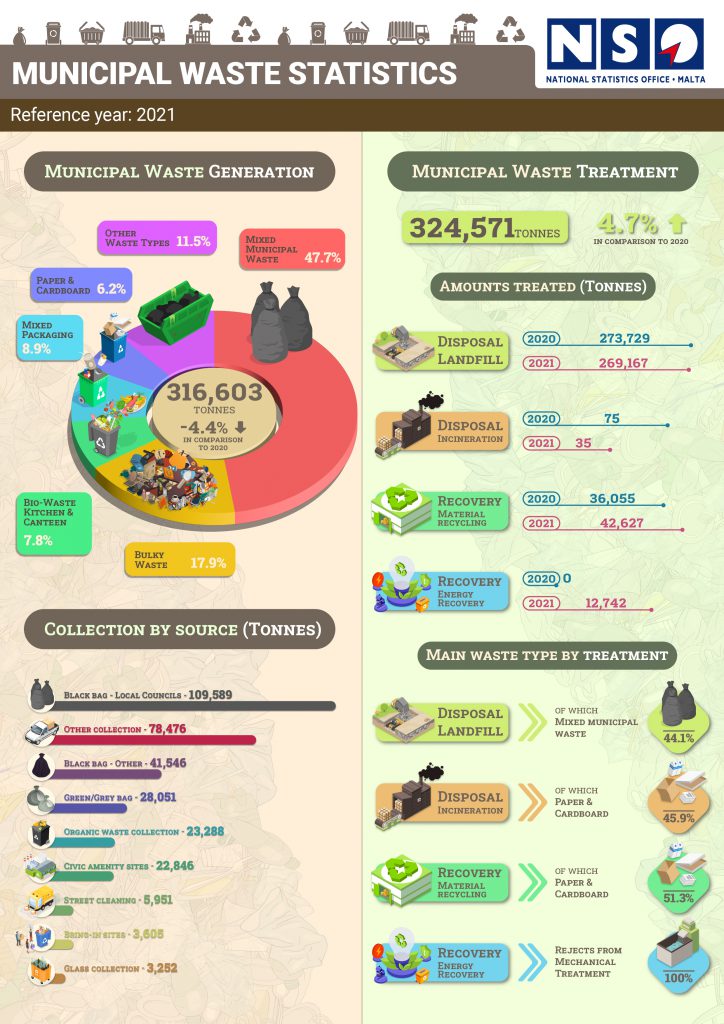Marginal decline in Malta’s municipal waste generation

Malta’s municipal waste generation has gone down for the first time in five years after a 4.4% decrease was recorded in 2021 when compared to the previous year. Though the decline is marginal, it is nonetheless a significant development which could be attributed to a higher environmental awareness.
Data published by the National Statistics Office shows that in 2021 the volume of municipal waste generated (i.e. from households and similar waste from businesses and institutions) totalled 316,603 tonnes which marks a decline of 14,539 over 2020 and the lowest since 2017. In absolute terms, the main decreases were registered for bulky waste (11,539 tonnes), bio-waste from kitchens and canteens (3,303 tonnes), and mixed packaging (1,111 tonnes). These decreases were partly offset by increases in other waste categories, of which the main one was for mixed municipal waste amounting to 1,916 tonnes.
Less waste per capita
A deeper analysis of the data reveals that in 2021 every inhabitant of the Maltese Islands generated 608 kilos of municipal waste with the figure going down to 590 kilos when including tourists. In both cases the level is below that for 2020 with the decrease being 5.3% and 6.3% respectively. Though the overwhelming share of municipal waste still ends up at the Maghtab landfill, there was some progress in 2021 as this share fell from 88.3% to 82.9%. During the period under review the amount of treated municipal waste increased by 14,712 tonnes up to 324,571 tonnes.
Less waste going to the landfill
In absolute terms, landfilled municipal waste decreased by 4,562 tonnes with the main contributors to this decrease being mixed municipal waste (21,072 tonnes), bulky waste (10,194 tonnes) and wood waste (4,838 tonnes). In contrast, the mechanical treatment of waste increased by 33,716 tonnes.
Around at third of Malta’s municipal waste was collected in the black bags through the door collection service operated by the local councils. This contributed to 109,589 kilos of waste which was 9,000 tonnes less than in 2020. Other waste which included hazardous materials amounted to 78,476 tonnes which was an annual decline of 9,000 tonnes. On the other hand, waste from black bags collected through other unspecified means rose by 11,000 tonnes while organic waste dropped by 3,000 tonnes to 23,288.
More waste recycled
When compared to 2020, recycled municipal waste increased by 6,572 tonnes or 18.2 per cent reaching a total of 42,627 tonnes. Paper and cardboard topped the list at 51.3% of the total share of recycled waste. The most significant increases in recycling were achieved for metals (68%), clothes/textiles (55.4%) and plastic (52.5%). On the other hand, the recycling of glass and bio-waste from kitchens and canteens decreased by 7.7% and 3.6% respectively. In 2021, 12,742 tonnes of municipal waste underwent energy recovery treatment.
